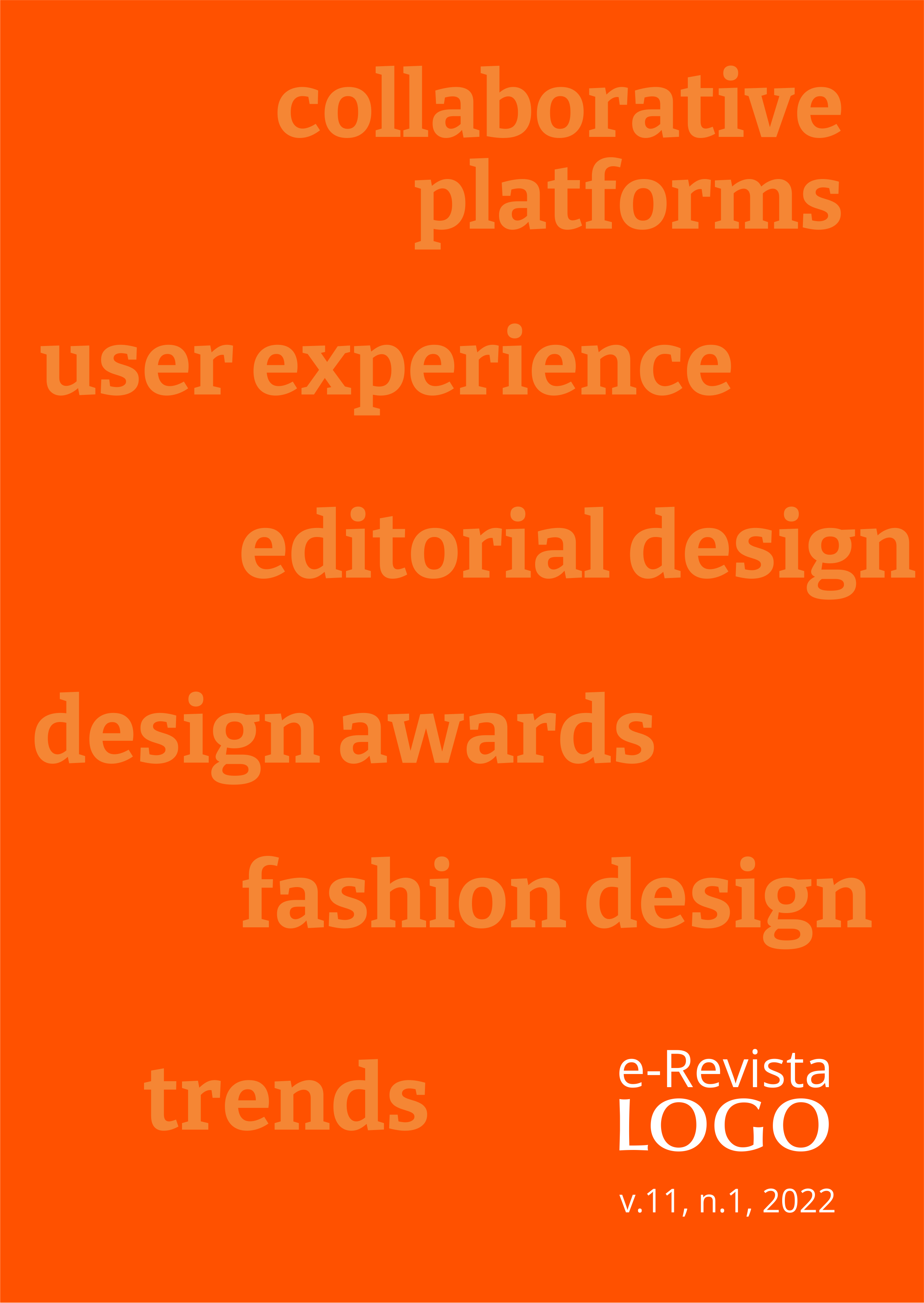MILPA magazine: editorial design and new perpectives
Palavras-chave:
Design Editorial, Design Gráfico, Arte Latino-americana.Resumo
It is possible to observe that self-published magazines and zines aim to
offer readers something that traditional titles, with their search for a large
volume of circulation, do not offer. This article had as main objective to discuss
new possibilities of the publishing market, based on the creative process of an
independent magazine developed as a project to conclude the Design course
at the Federal University of Santa Catarina (UFSC). From a methodology
structured in different creative stages, interviews were conducted with the
target audience in question, to recognize the possible needs of users as
readers and appreciators of printed material. The doubts raised arose in the
sense of seeking a better understanding of the relevance and survival of the
publishing market in the current scenario, marked by the consumption of
digital and instant information. Thus, it sought to identify interesting
resignifications to the permanence of this aspect of design, to explore
possibilities of printing, dissemination, and distribution.
Referências
Zanatta, T. M. (2019). Projeto gráfico-editorial de uma revista independente com foco na produção artÃstica latino-americana. TCC – UFSC.
Heller, S. (2003). Merz to Emigre and beyond (pp. 6–11). Nova Iorque: Phaidon.
Frieze, https://frieze.com/article/personal-latin-america, acedido a 2019/03/05.
Oliveira, B. E. (2016). Variantes sin contenido: territórios, especulação estética e visualidades decoloniais na América Latina. Dissertação – UNILA, pp. 12–15.
Neves, A. et al. (2017). Bruce Archer: método sistemático para designers. In: congresso interno, pp. 8–9. Recife: UFPE.
Lacerda, A. P. (2012). Pioneiros dos métodos de projeto (1962–1973): redes na gênese da metodologia do design. Dissertação – UFRGS, pp. 112–114.
Frascara, J. (2004). Communication design: principles, methods, and practice (pp. 72–73). Nova Iorque: Allworth Press.
Zappaterra, Y., Aldwell, C. (2014). Design editorial: Jornais e revistas / MÃdia impressa e digital (pp. 30). São Paulo: GG.
Stack Magazines, https://www.stackmagazines.com/art-design/why-does-design-matter/, acedido a 2019/03/03.
Downloads
Publicado
Edição
Seção
Licença
Copyright (c) 2022 e-Revista LOGO

Este trabalho está licenciado sob uma licença Creative Commons Attribution 4.0 International License.
This journal, following the recommendations of the Open Access movement, provides public access to all its content, following the principle that free access to research generates a greater global exchange of knowledge. Such access is associated with the reading and citing an author's work.
The author must ensure:
-
that there is a full consensus of all co-authors in approving the final version of the document and its submission for publication.
-
that their work is original, and if the work and / or words of other people were used, they were duly recognized.
Plagiarism in all its forms constitute unethical publication behavior and is unacceptable.
The articles and other published works, become the property of the journal.
The contents of e-Journal LOGO are licensed under a Creative Commons License 4.0 by. It reserves the right to use software or other methods of detecting plagiarism to analyze the submitted works.
Under the license you have the right to:
- Share - copy and redistribute the material in any media or format
- Adapt - remix, transform, and create from material to any purpose, even if commercial.
- The licensor can not revoke these rights as long as you respect the license terms.
According to the following terms:
- Assignment - You must give the appropriate credit, provide a link to the license and indicate if changes have been made. You must do so in any reasonable circumstance, but in no way do you suggest to the licensor to support you or your use.
- No additional restrictions - You may not apply legal terms or technological measures that legally restrict others from doing anything that the license permits.
The authors of papers submitted to the e-Journal LOGO authorize their publication in physical and electronic media for academic purposes. The authors also agree on the distribution of articles by national and international indexing databases, whether or not for profit, and can be reproduced as long as the source is cited.
O autor deve garantir:
- que haja um consenso completo de todos os coautores em aprovar a versão final do documento e sua submissão para publicação.
- que seu trabalho é original, e se o trabalho e/ou palavras de outras pessoas foram utilizados, estas foram devidamente reconhecidos.
Plágio em todas as suas formas constituem um comportamento antiético de publicação e é inaceitável.
Os artigos e demais trabalhos publicados, passam a ser propriedade da revista.
Os conteúdos de e-Revista LOGO estão licenciados sob uma Licença Creative Commons 4.0 by. Reserva-se o direito de usar software ou otros métodos de detecção de plágio para analisar os trabalhos submetidos.
Segundo a licença você tem direito de:
- Compartilhar — copiar e redistribuir o material em qualquer suporte ou formato
- Adaptar — remixar, transformar, e criar a partir do material para qualquer fim, mesmo que comercial.
- O licenciante não pode revogar estes direitos desde que você respeite os termos da licença.
De acordo com os termos seguintes:
- Atribuição — Você deve dar o crédito apropriado, prover um link para a licença e indicar se mudanças foram feitas. Você deve fazê-lo em qualquer circunstância razoável, mas de maneira alguma que sugira ao licenciante a apoiar você ou o seu uso.
- Sem restrições adicionais — Você não pode aplicar termos jurídicos ou medidas de caráter tecnológico que restrinjam legalmente outros de fazerem algo que a licença permita.


